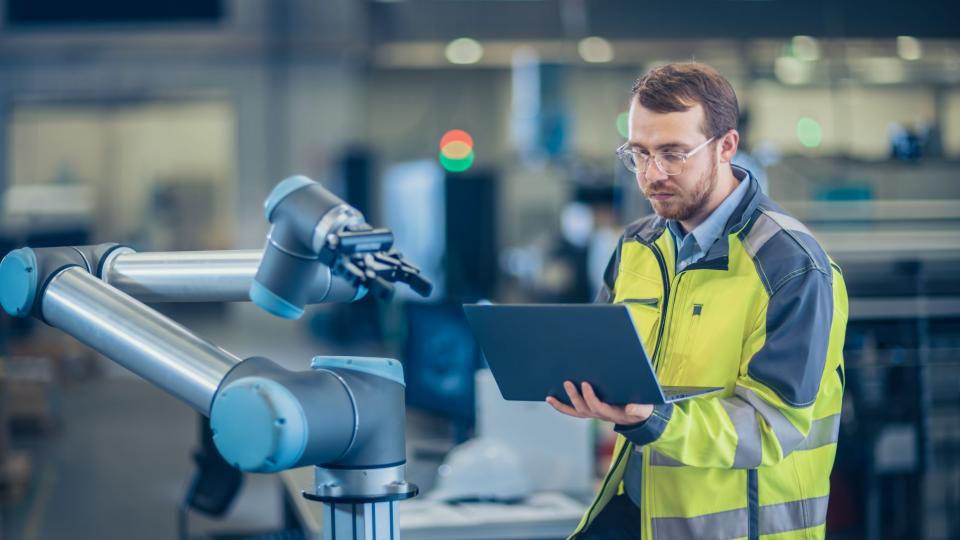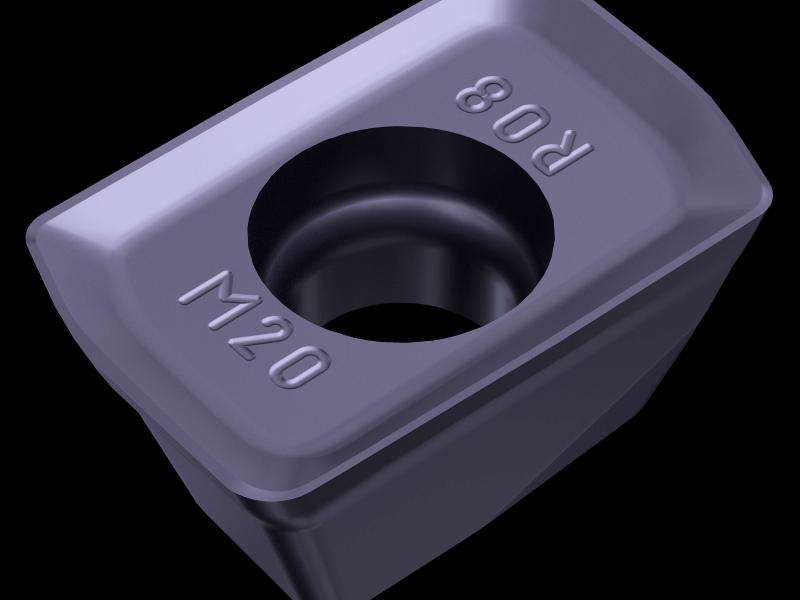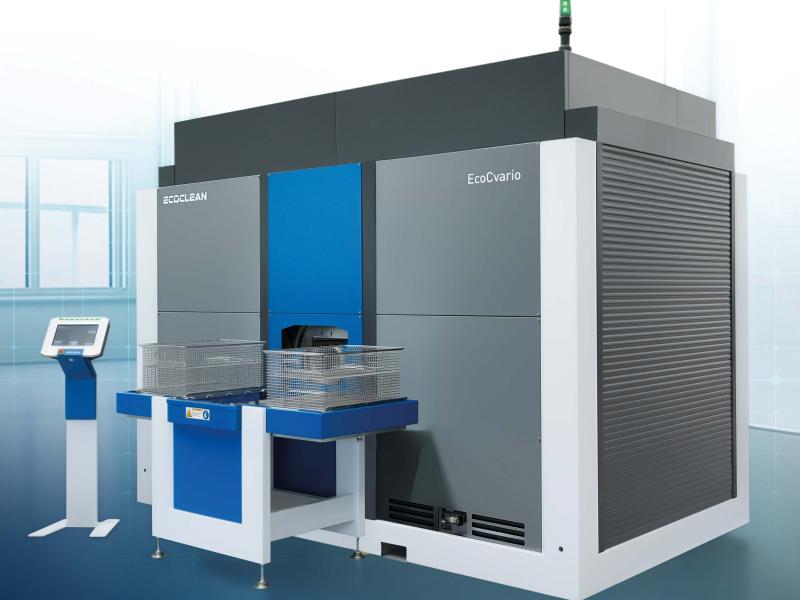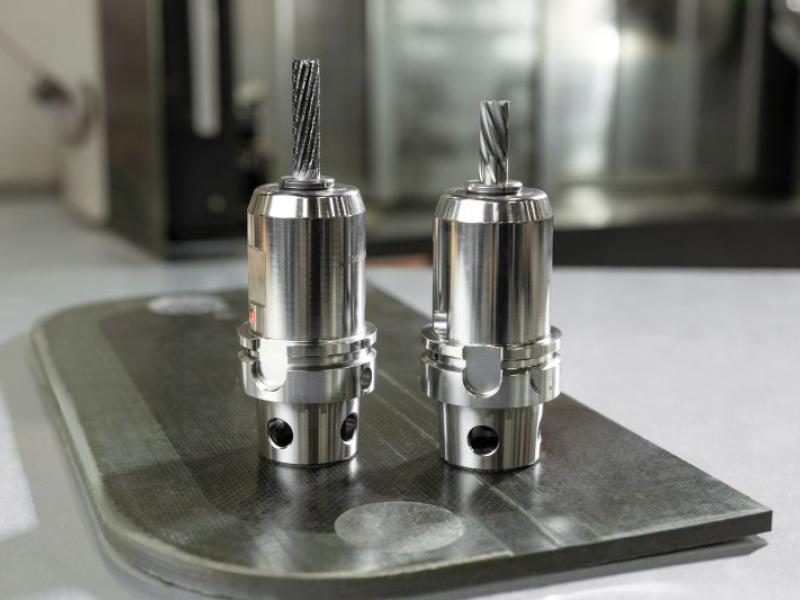“Great things,” said Vincent Van Gogh, “Are done by a series of small things brought together.” This applies to industrial robots, which are getting smaller and more compact — as are the companies buying them. It’s expected that small and medium-sized enterprises (SMEs) will be a major driver of the robotics market in the coming years. Here, Chris Johnson, managing director at specialist bearing supplier SMB Bearings, explains why thin section bearings are crucial to helping SMEs benefit from robots with improved manoeuvrability and precision.
Industrial robots will be required to fit into smaller spaces as manufacturers become more concerned about robot “real estate”, or that every square metre of factory floor space is used for production.
Smaller robots are more accessible to SMEs. Previously, the hefty upfront costs associated with automation has stopped smaller businesses from investing in robotics — as well as deterring larger companies from taking the risk. Instead, more compact, versatile and flexible robots can provide another solution by fitting more easily — and cost-effectively — into smaller spaces on manufacturers’ production lines.
Another argument for smaller robots is safety. Whereas giant robots typically operate in isolation, caged-off from human workers, smaller robots — like cobots — can operate in open or semi-protected environments. According to a recent interview with Alex Megej, chief technology officer at TE Connectivity, this combination between large and small machines will be crucial if robots are to thrive in SMEs.
“In terms of collaboration between huge robots and small robots, this usually happens only in situations where smaller robots, or small cobots, in this case, pick and place material for further processing with larger robots,” said Megej.
Expect to see a growth in smaller, speedier robots that can perform more complex and precise tasks without placing human co-workers in danger — whether in surgical environments or warehouses. One example, reports Vox magazine, is Amazon’s Kiva robots, which follow workers around the warehouse and support them in tasks.
Lastly, there’s Industry 4.0. 2D and 3D vision systems and artificial intelligence (AI) are all among the latest technologies set to usher in a new phase of robotics. These technologies will require new levels of connectivity and controllability that integrates, quickly and seamlessly, into the smaller spaces of any production line, while also being compatible with companies’ manufacturing execution systems (MESs).
Speed and precision
Robot applications rely on high-precision bearings including variants made from hybrid chrome and steel, along with ceramic bearings and slewing bearings. Articulated robotic arms, for example, require robot bearings in the rotary joints.
Among SMB Bearings’ customers, thin section bearings are the most popular choice for robot applications — which are particularly thin and compact as the name suggests. Thin section bearings are essential in allowing robots to perform tasks with increasing precision and accuracy. One example is EZO brand thin-section ball bearings, which SMB Bearings supplies as either open, shielded or sealed in SAE52100 chrome steel or 440 grade stainless steel. Thin section bearings are also favoured for their ability to withstand radial loads as well as moderate thrust loads in both directions.
Take, for instance, Shadow Robot Company, an SME that manufacturers dextrous robotic hands for academia and nimble work. The customer wanted to branch-out into industrial applications with its robust and reliable Smart Grasping System™, a system that relies on AI to recognise different objects and select the appropriate grasp.
For the system to work, Shadow Robot Company needed specific bearings with very tight tolerances. Ease of installation and dimensional accuracy were also among the customers’ needs. In response, SMB Bearings recommended and supplied EZO thin-type precision bearings. Every bearing that comes off the production line is of the same shape and size, every time, which is crucial to maintaining accuracy and consistent overall behaviour in the robot itself.
In the end, the customer reported that the bearings were very easy to install as a direct result of their quality, tolerance and consistency. This was essential for repeated assembly of the Smart Grasping System™, but also vital to the accuracy of the smart grasper’s movements. Thanks to the accuracy allowed by thin section bearings, the Smart Grasping System™ can pick up many types of objects, reducing the need for numerous hands in a factory.
Robot bearings will be crucial to helping smaller companies benefit from smaller and more compact robots and, to paraphrase Van Gogh, achieve great things by bringing a series of small things together.
For more information about SMB Bearings and EZO bearings, smbbearings.com.






